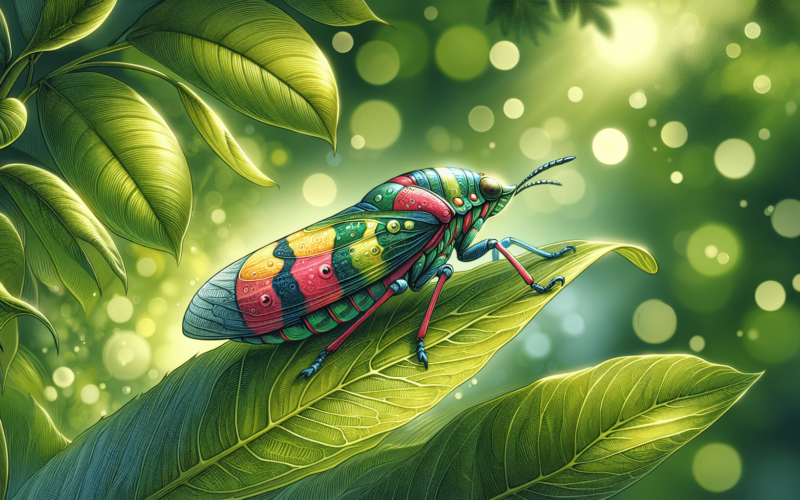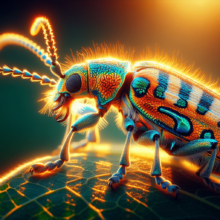Explore the fascinating world of insects and discover their shared characteristics, from their unique exoskeletons to diverse lifestyles. Uncover the commonalities!
How Do I Know What Kind Of Bug I Found?

Have you ever come across a bug in your home or garden and wondered what it is? Identifying insects can be quite a challenge, especially considering the vast diversity of species out there. Whether you stumbled upon a pesky intruder or a fascinating creature, understanding what kind of bug you’ve found can help you deal with it appropriately. Let’s unravel the mystery together!

Why Identify Bugs?
Identifying a bug can serve multiple purposes. Maybe you’re dealing with a pest in your home that you want to eliminate, or perhaps you’ve found a colorful insect in your garden that you want to encourage. Whatever the case may be, knowing the type of bug can help you make informed decisions about how to handle it.
Benefits of Knowing Your Bug
When you can accurately identify a bug, you gain several advantages:
- Pest Control: Distinguishing between harmful pests and harmless insects allows you to treat the problem effectively.
- Gardening: Understanding which insects might be beneficial to your plants can help foster a healthier garden ecosystem.
- Curiosity: The natural world is full of fascinating creatures; knowing what they are can enhance your appreciation for biodiversity.
Basic Bug Anatomy
Before diving into identification, it’s helpful to know the basic anatomy of insects. Most bugs share common structures, enabling you to differentiate them based on their characteristics.
Key Features to Observe
When examining a bug, consider the following attributes:
- Body Shape: Is it long and thin, round, or flat?
- Color: Is it brightly colored or more muted?
- Wings: Does it have wings? How many? Are they clear or patterned?
- Legs: How many legs does it have? Are they long, short, or spindly?
- Antennae: Are the antennae long, short, or absent?
This foundational knowledge can aid in the initial identification process.
Categories of Bugs
Bugs can be broadly categorized into several groups based on their characteristics and behaviors. Familiarizing yourself with these categories can make the identification process smoother.
1. Beetles
Beetles are one of the most diverse groups of insects, with thousands of species. They have hard outer wings and are typically classified by their shape, size, and color.
Characteristics:
- Hardened forewings (elytra) that cover their back.
- Straight-line bodies that can range from round to elongated.
- Various colors and patterns, from earthy tones to vibrant hues.
Common Types:
| Type | Example |
|---|---|
| Ladybug | Beneficial to gardens, eats aphids. |
| Japanese Beetle | A pest for many plants, known for its iridescent coloration. |
2. Spiders
While technically not insects, many people often confuse spiders with bugs. They belong to the arachnid family and have distinct features.
Characteristics:
- Eight legs (rather than six).
- Two body segments (cephalothorax and abdomen).
- Fangs and silk-producing glands.
Common Types:
| Type | Example |
|---|---|
| Common House Spider | Generally harmless but can be a nuisance indoors. |
| Black Widow | Recognizable by its shiny black body and red hourglass marking; venomous. |
3. Ants
Ants are social insects known for their cooperation and organization. There are many species with varying sizes and colors.
Characteristics:
- Segmented bodies, typically with a narrow waist.
- Antennae that bend.
- Social behavior, living in colonies.
Common Types:
| Type | Example |
|---|---|
| Carpenter Ant | Often found in wood, they can cause structural damage. |
| Fire Ant | Known for their painful sting and aggressive behavior. |
4. Wasps and Bees
Wasps and bees play crucial roles in pollination and have unique features that set them apart from other insects.
Characteristics:
- Typically have slender waists.
- Two pairs of wings.
- In the case of bees, often fuzzy due to hair used for pollen collection.
Common Types:
| Type | Example |
|---|---|
| Honeybee | Essential for pollination and honey production. |
| Yellow Jacket | Aggressive wasps that can become a nuisance at outdoor events. |
5. Flies
Flies are often seen buzzing around in various environments. They can be irritating, but many species play essential roles in the ecosystem.
Characteristics:
- One pair of wings (most).
- Large eyes.
- Quick flying abilities.
Common Types:
| Type | Example |
|---|---|
| House Fly | Common indoor pest that can carry diseases. |
| Horse Fly | Large and painful biters, often found near livestock. |
DIY Bug Identification: Steps to Take
When you find a bug and want to identify it, consider following a step-by-step process. This can help you narrow down your options and learn more about your newfound friend or foe.
Step 1: Observe the Environment
Take note of where you found the bug. This can give you important clues about its identity. For example, did you find it indoors, outdoors, in a garden, or near water? Some insects prefer specific habitats.
Step 2: Take Detailed Notes
Document your observations. Consider writing down the following:
- Size (small, medium, large)
- Color (primary and secondary colors)
- Behavior (flying, crawling, jumping)
- Location (under plant leaves, on the ground, near your garbage)
Step 3: Compare Features
Using your notes, compare the features of the bug against online databases or insect identification guides. Look for specific traits like:
- Body shape
- Number of legs and wings
- Color markings or patterns
Step 4: Use Identification Apps
Technology can be your best friend. Many apps can assist in identifying insects by simply taking a photo. Apps like iNaturalist or Seek can provide immediate feedback and help you learn more about the insect.
Resources for Bug Identification
You don’t have to do this alone! There are plenty of resources available to assist in bug identification.
Field Guides and Books
Keep a few field guides on hand that focus on local insects. Look for ones that feature photography, descriptions, and fun facts that can be both informative and enjoyable.
Websites and Online Databases
- BugGuide.net: A community-driven site to share and identify insects found in North America.
- InsectIdentification.org: A comprehensive database to help you with detailed search features.
Local Extension Services
Many universities have extension services with experts in entomology who can assist with bug identification and provide relevant information based on your location.
How to Safely Handle Bugs
If you’re considering getting up close and personal with your bug, it’s essential to handle them safely – for both your sake and theirs.
General Safety Tips
- Use gloves: If you’re unsure about the bug’s potential for harm, wear gloves.
- Avoid direct contact: If possible, observe the bug without picking it up. Use a container to inspect it more closely if necessary.
- Release outside: If the bug is harmless and doesn’t belong indoors, consider releasing it outside in a suitable environment.
Common Bug Myths
As you navigate the world of insects, you may come across a few myths. Let’s debunk some common misconceptions!
Myth 1: All Bugs Are Pests
Not all insects are harmful. Many are beneficial to your garden and the ecosystem, such as pollinators and predators of other pests.
Myth 2: Touching a Bug Will Make It Bite
Most bugs are not aggressive and will not bite unless they feel threatened. Understanding their behavior can help you avoid unnecessary fears.
Conclusion
Identifying bugs can be a fun and educational experience. By paying attention to their features, behavior, and environment, you can unravel their secrets and understand their role in our world better. Whether you’re dealing with a dangerous pest or simply observing a beautiful butterfly, there’s so much to learn about these fascinating creatures. Give it a try the next time you encounter a bug – you might find yourself developing a newfound appreciation for the myriad of insects around you!



